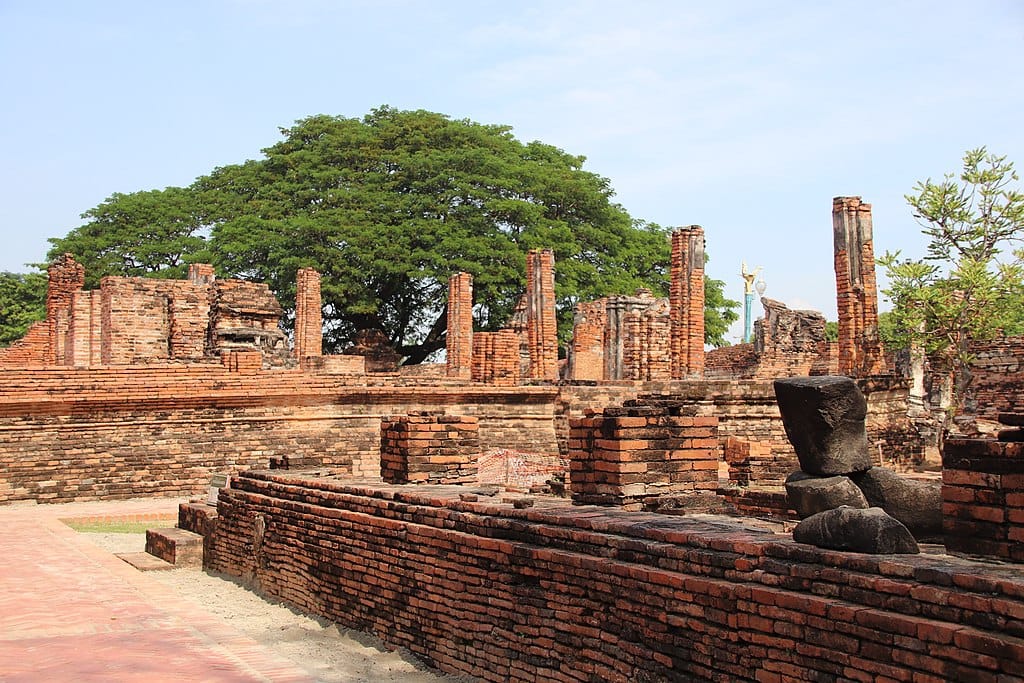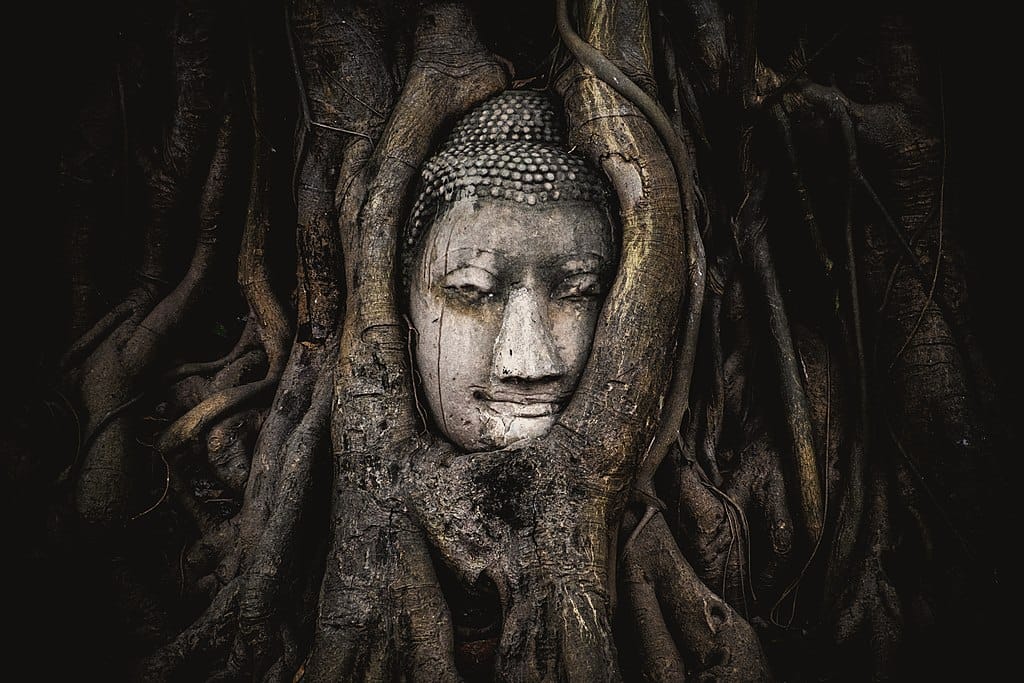Historic City of Ayutthaya
Ayutthaya, located in central Thailand, is a city rich in history and culture, known for its beautiful ruins and remarkable temples. Founded in 1350, it was the capital of the Kingdom of Siam for over four hundred years, becoming a vibrant center for trade and cultural exchanges in Southeast Asia. The city is uniquely situated on an island surrounded by three rivers, which helped it thrive in commerce and communication.
During its prime in the 1700s, Ayutthaya was known for its stunning buildings, which included impressive palaces, tall towers called prangs, and beautiful Buddha statues that combined different cultural influences, including those from Khmer, Persian, and Portuguese styles. Even after the city was heavily damaged by the Burmese army in 1767, its vibrant culture and spirit remained strong. This ability to bounce back is a strong reminder of the strength and determination of its people, inspiring everyone who visits.
Ayutthaya is also a UNESCO Heritage Site that attracts visitors from all over the globe. Many come to explore its historic places, like Wat Phra Si Sanphet, Wat Mahathat, and the Ayutthaya Historical Park. The ruins of this once-bustling city tell a story of prosperity, cultural exchange, and the resilience of its people, making it an essential part of Thailand’s history.
Table of Contents
Where is the Ayutthaya located?

Ayutthaya is a historical city in Thailand, situated about 85 kilometers (53 miles) north of Bangkok. It covers an area of around 289 hectares, which is quite spacious. This city was once the first city of the Kingdom of Siam from the 14th to the 18th centuries. Today, Ayutthaya is well-known for its beautiful ancient temples and historical landmarks, making it a charming destination for travelers focused on history and culture.
Ayutthaya was constructed on an island surrounded by three rivers, which played a significant role in its importance throughout history. This unique location helped protect the city from attacks and seasonal floods, giving it a strong advantage. As the Angkor Empire started to weaken, Ayutthaya was able to grow in power and increase its territory, taking advantage of the situation.
What is the inscription of Ayutthaya?

The “Historic City of Ayutthaya” received a UNESCO World Heritage Site in 1991, acknowledging its importance as a cultural and historical landmark. The inscription by UNESCO emphasized the city’s role as a flourishing capital of the Kingdom of Siam, demonstrating a distinctive mixture of influences from different cultures owing to trade and diplomatic interactions. Ayutthaya’s architectural marvels include a mix of Khmer, Sri Lankan, Persian, and Dutch influences, evident in the city’s temples and palaces.
The town was a center of commerce and a melting pot of cultures, facilitating significant exchanges between civilizations across Asia and beyond. As an important political and economic center, Ayutthaya played a crucial role in regional history, influencing neighboring countries and cultures. Its significance in shaping the region’s history is undeniable, making it an essential part of the world’s heritage and a site that must be preserved for future generations.
What is the history of Ayutthaya?

The Ancient City of Ayutthaya, founded in 1350, was the next capital of the Kingdom of Siam after Sukhothai. It thrived from the 14th to the 18th centuries. During that time, it developed into one of the world’s largest and most cosmopolitan urban centers and a hub of international diplomacy and trade. The Burmese army assaulted and destroyed the city in 1767, setting the town ablaze and compelling the residents to leave their homes. Its remnants, distinguished by the prang (reliquary towers) and massive monasteries, provide a glimpse into its former grandeur.
The city was never reconstructed in the same spot and is still recognized today as a significant archaeological site. The royal court of Siam took great care in keeping detailed records of their activities. While many of these documents were lost during a conflict when the city was attacked, some have survived and serve as an essential source of information about that time. Paying close attention to how we understand and share the history of the ruins helps ensure that the site remains authentic and valuable for education.
What is the Art and Architecture of Ayutthaya?

The Ancient City of Ayutthaya is a remarkable testament to the evolution of authentic Thai art. Art pieces, including wall paintings, sculptures, and palm leaf manuscripts from that era, provide equally important testimony. Notably, the mural paintings in Wat Ratchaburana’s crypt are particularly significant. Located downstream from the Ayutthaya Royal Palace were sections populated by foreign merchants and missionaries, each constructing buildings reflecting their unique architectural styles.
These foreign influences, including those from China, Japan, India, Persia, and Europe, are still evident in the city’s remaining art and architectural remnants. This cultural diversity is a testament to Ayutthaya’s role as a significant hub for international diplomacy and trade. This city was not only a regional powerhouse but also a global influencer.
Ayutthaya, once a significant hub for international diplomacy and trade, is now an archaeological site marked by the remnants of towering prang (reliquary towers) and grand Buddhist monasteries. These structures provide insight into the city’s former splendor and the magnificence of its architectural design.
What is the Culture and Civilization of Ayutthaya?

Ayutthaya Art highlights the incredible talent and creativity of the Ayutthaya civilization. It also shows how this culture blended and incorporated various influences from other places. The impressive palaces and Buddhist temples built in the capital, like Wat Mahathat and Wat Phra Si Sanphet, showcase the wealth and skills of their creators and highlight the rich cultural and intellectual traditions that these structures represent.
All the buildings were beautifully decorated with high-quality crafts and murals. These designs combined traditional styles that have roots in Sukhothai and Angkor while incorporating elements from 17th and 18th-century art from Japan, China, India, Persia, and Europe. This mix created a rich and unique representation of diverse cultures and set the stage for blending art and architecture that became popular in the Rattanakosin Era and beyond.
What is Ayutthaya famous for?

The Historic City of Ayutthaya is famous in historical accounts. During its era, it was one of the largest cities globally and a key center for politics, economics, and religion. Numerous visitors have documented their experiences and observations about the city. Ayutthaya, recognized from modern sources and maps, was designed following a structured and strict grid of city planning that included roads, canals, and moats encircling all the main buildings.
The city’s plan took full advantage of its location among three rivers and featured an exceptionally advanced and unique global water management system. This system, which included canals and moats, protected against floods and facilitated transportation and trade. As a result, Ayutthaya emerged as a regional and international trade hub, connecting the East and the West.
Why do we need to preserve the Historic City of Ayutthaya significantly for us and future generations?

Preserving the Historic City of Ayutthaya is crucial for maintaining its cultural and historical significance. It involves a comprehensive approach that includes restoration, research, community engagement, sustainable tourism practices, and educational efforts. By implementing these strategies, stakeholders aim to ensure that this significant site continues to tell its story and inspire future generations.
Why should you visit the Ayutthaya as a visitor?

Ayutthaya, the historical capital of Thailand, is a destination that should not be missed for many compelling reasons. Established in 1350, it thrived for more than four centuries, establishing itself as one of the key cities in Southeast Asia. It provides valuable insight into Thailand’s history and culture. The city boasts remarkable temple ruins and ancient buildings, including Wat Phra Si Sanphet, Wat Mahathat, and Wat Ratchaburana.
These archaeological remnants demonstrate the past’s splendor and emphasize that period’s distinctive architecture. A visit to Ayutthaya offers a chance to dive into Thai culture. You can wander through local markets, sample traditional dishes, and participate in cultural events highlighting the area’s rich heritage. The town is on an island encircled by rivers, creating a scenic backdrop. You can enjoy boat excursions to view the ruins from the water, which offers a distinctive perspective.
In addition to the historical landmarks, Ayutthaya boasts lovely parks and a natural environment. Make sure to explore the Ayutthaya Historical Park and the nearby nature reserves. Ayutthaya presents a delightful mix of history, culture, and natural charm, making it a destination worth visiting for anyone traveling to Thailand.
How can you engage yourself in the rich cultural heritage of Ayutthaya while exploring its ancient sites?
Embark on an unforgettable journey to Ayutthaya, where history comes alive! Explore the majestic ruins and breathtaking temples that tell the story of a thriving kingdom. Whether you’re wandering through the ancient streets, sampling delicious local cuisine, or capturing stunning photographs of the iconic prangs, Ayutthaya offers a rich tapestry of experiences waiting for you to discover. Start planning your adventure today and involve yourself in the enduring beauty of this UNESCO World Heritage Site!
When you’re planning your adventure, enhance your travel experience by using trusted websites like GetYourGuide and Trip.com! These platforms offer a variety of enjoyable tours, activities, and accommodation options to suit every traveler’s needs.
- GetYourGuide offers a wide variety of unforgettable travel experiences. You can choose from tickets to Popular Attractions, Transportation Options, City Passes, Guided Tours, Hop-on Hop-off Bus Services, Water Activities, Day trips, and Trips that last several days in many locations around the world.
- Trip.com makes it easy to combine Flights and Hotels, Trains, Car Rentals, Airport Transfers and Attractions & Tours to create the perfect travel package tailored just for you.
Start your journey with our reliable travel partners and unlock the best of Ayutthaya and beyond!
Disclaimer
In this post, affiliate links are included and those links are associated with well-known travel companies such as GetYourGuide and Trip.com. If you choose to purchase or book a service using those links, we may earn a commission at no additional cost to you. We focus on recommending products and services that are helpful to you and we appreciate your support!
Conclusion
We hope you find this information helpful for your next trip. If you want to learn more, check out our other travel blog posts. We cover many topics, including amazing places to visit and helpful travel tips. Whether you’re looking for hidden gems, new cultures, or helpful advice, there’s something for everyone.
Additionally, If you enjoyed the information we shared, don’t forget to explore our other travel product reviews to make your journey even better! Please take a moment to look through our previous posts and let your sense of adventure guide you on your next journey! We wish you happy travels and look forward to sharing more with you in our next blog post!




